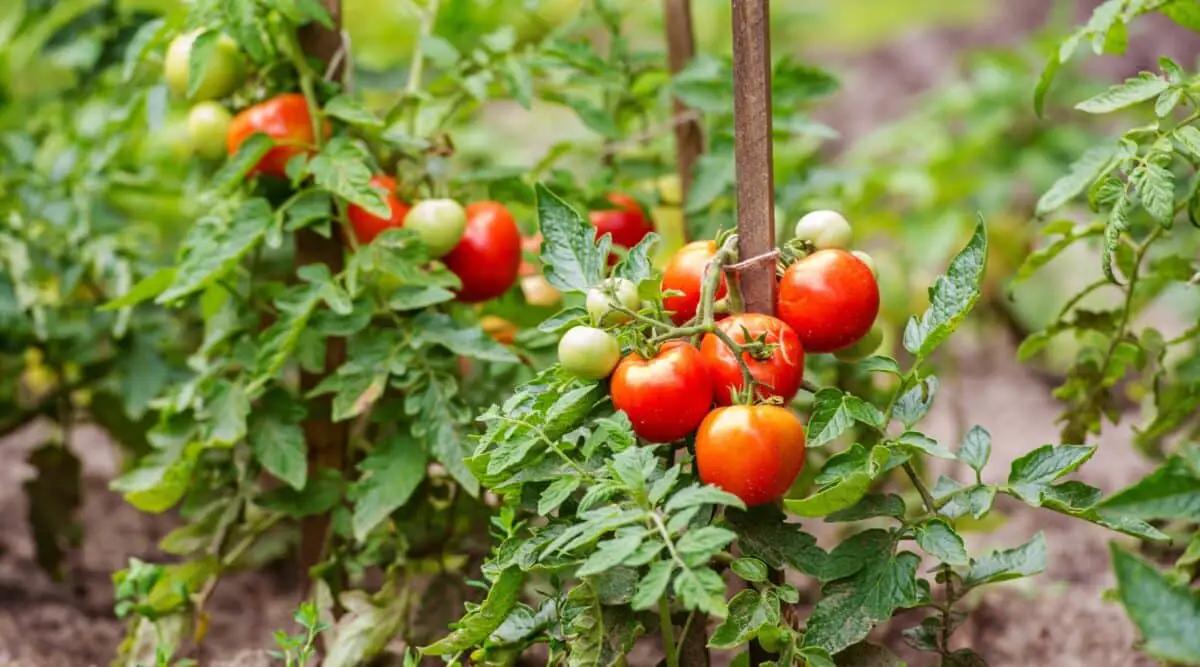Too-close planting situations cause plants to compete for resources and steal soil nutrients from each other, potentially leading to unhealthy tomato plants which won’t survive the season or produce smaller fruits than desired.
Spacing is also key for controlling diseases in tomatoes. Blight and septoria leaf spot spread quickly when leaves touch, so proper spacing helps minimize risk of transmission of such diseases.
Optimal Spacing
Tomato plants are heavy feeders that need nutrients and water in abundance to thrive and produce fruit. Because they stay in the ground for an extended period, multiple fertilization sessions during key growth points during the season must also take place to promote optimal growth and fruit production. By providing enough space between tomato plants for their roots to expand without crowding out others or hindering fruit production, optimal spacing also reduces disease spread as well as pest problems between clustered tomato plants.
The ideal spacing of tomato plants depends on both the variety and climate conditions in your region. Determinate varieties with bushy growth patterns require less space, since their maximum height reached is when they stop and turn their energy to flowering and fruit production all at once. On the other hand, indeterminate vine-growing types need significantly more room due to their sprawling vines and fruit production.
Ideal tomato spacing depends on the expected thickness of fruit you desire; thicker fruit requires closer planting while thinner varieties may need more room between each planting. You may also adjust this based on whether or not you plan on using stakes, wire cages or other supports to support them.
Optimized plant spacing depends on how your tomatoes are planted – either direct seeded into the ground or transplanted from nursery starts. Too close together, tomato plants compete for resources like moisture, nutrients and sunlight which could inhibit their growth and lead to lower yields.
When seeding tomatoes directly into your garden or transplanting nursery starts, it is essential to follow any specific instructions regarding spacing and other planting details for that variety. You can find this information either online or in reference books.
To ensure you plant tomatoes at an appropriate distance, using a tape measure is the easiest way to determine how far apart each row of plants should be planted. As a general guideline, three feet should be left between rows of determinate tomato plants and four between indeterminate plants.
General guidelines suggest the ideal spacing for tomato plants is 18-24 inches for beds and 36-48 inches in raised bed gardens – enough space to allow their roots to spread without becoming overcrowded. Healthy soil is essential to successful tomato cultivation; amend it prior to planting with additional nitrogen, phosphorus and potassium-rich sources like fertilizers or composted manure as needed to enhance soil conditions and ensure its success in growth. Furthermore, aim for maintaining an ideal pH level between 6.5-7.9.

Determinate Varieties
The distinction between determinate and indeterminate tomato plants might seem subtle, but it has many repercussions for their cultivation. It relates to how fast their leaves grow and mature as well as when fruit will begin producing itself; determinate varieties reach a certain height before stopping their growth and yielding their crop within an expected timeline, making them popular choices among gardeners who require quick harvests such as making canned tomatoes quickly or other projects requiring mass harvests quickly.
To increase the yield of delicious tomatoes, it is key to keep these plants healthy by providing adequate nourishment. That means adding compost at planting time or as part of the top layer afterward; additionally, use high-quality soil, such as aged manure or Miracle-Gro(r) Performance Organics All Purpose In-Ground Soil to foster vigorous growth.
Spacing tomato plants correctly is vitally important for several reasons. Tomatoes are notoriously thirsty plants and if their roots become overcrowded they may fight over water and nutrients for limited resources, leading to diminished yields. By keeping their spacing appropriate they will be better equipped with developing strong roots systems and being more likely to resist diseases and pests.
Assuring you provide enough space between tomato plants when growing them on a trellis is particularly essential if you opt to grow them this way. Many gardeners choose this approach either due to limited garden space, or simply preferring its aesthetic. When growing tomatoes on a trellis, ensure there is sufficient room so that their tall stems and sturdy frames can expand and produce fruit for years.
Tomatoes grown on trellises tend to be less vulnerable to wind and weather damage, and tending your crops becomes simpler; rows should be spaced four feet apart so you can easily move between them while tending your crop.
Row spacing should also help your tomato plants receive adequate sunlight; otherwise, their leaves could shade each other out and lead to reduced harvest numbers and quality. By following these guidelines for planting tomato plants with confidence that they’ll thrive and produce maximum harvest, as well as good air circulation which helps combat mildew or other fungal problems, it allows you to enjoy the fruits of your labor without going to a grocery store!

